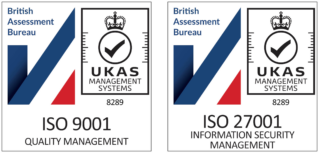Right to Work Glossary

It’s important to keep on top of Right to Work (RtW) terminology and the latest guidance.
As a certified Identity Service Provider (IDSP) and the UK’s leading provider of Right to Work check services, we want to help you confidently navigate the latest Right to Work terminology.
Whether you’re a hiring manager considering your onboarding process or a HR Director looking to keep your team informed, we hope you find our glossary provides some clarity on all things Right to Work.
Biometric Residence Card (BRC) and Biometric Residence Permit (BRP)
BRCs and BRPs are evidence of the holder’s immigration status in the UK. They show the conditions of their stay and enable them to confirm their identity, for example, to open a bank account in the UK or to access public services. Employers can no longer accept a physical BRC or BRP as proof of Right to Work. Holders of BRCs and BRPs can apply for an eVisa / Share code and must evidence their Right to Work using the Home Office online service.
Certified IDSP
An Identity Service Provider which is certified against the UK Digital Identity and Attributes Trust Framework (UKDIATF), ensuring that the service meets the Digital Right to Work Scheme standards. Although it is not mandatory for employers to use a certified IDSP to carry out digital Right to Work checks, the Home Office recommends the use of a certified IDSP. A full list of certified IDSPs is on the Home Office website.
Civil Penalty
A fine imposed on employers who are found guilty of hiring someone who they knew or ‘had reasonable cause to believe’ does not have the Right to Work in the UK.
Digital Scheme Checks
The Digital Right to Work Scheme was introduced by the Home Office in April 2022. A Digital Right to Work check allows applicants with eligible identity documents to prove their identity and Right to Work remotely, instead of presenting physical documents to their employer in person.
eVisa
An eVisa, or electronic visa, is a digital or biometric version of a traditional visa that is stored electronically instead of being stamped or attached to a physical passport. eVisas can be used as evidence of Right to Work, Right to Rent or general immigration status, and are accessed via a share code.
Frontier Worker Permit
If your employee is living in another country, but commuting to work in the UK, a Frontier Worker Permit allows them to enter the UK and prove your right to benefits and services. They can use a digital version of this permit via share code to prove their Right to Work.
Good Practice Guide 45 (GPG45)
GPG45 is the government standard for ID verification. It is a guide for any organisation that needs to verify the identity of customers, employees, and other parties. It is issued by UK Government Digital Services and comprises guidance on how to prove and verify identity against a range of confidence levels.
Identity Document Validation Technology (IDVT)
Technology that can be used to check the validity of documents which your candidates present to prove their identity. IDVT provides high levels of accuracy and assurance when checking different forms of identity documents.
Identity Service Provider (IDSP)
An organisation that provides identity verification services. They may be certified to provide identity verification to specific Levels of Confidence, specified by government standards (e.g., GPG45 and the UKDIATF) supported by Identity Document Validation Technology (IDVT).
Identity Validation
When validating identity, an organisation is checking that data provided by an applicant, for example a passport, is genuine, authentic and hasn’t been tampered with. Identity validation is a critical first step in any verification process.
Identity Verification
Ensuring that a person is linked directly to the data supplied during validation, confirming that the individual is who they claim to be. Verification involves comparing the provided information against reliable and official sources to ensure that the identity being presented can be found and matched with the holder. That might involve biometric verification, (e.g., facial matching and address verification).
Level of Confidence (LoC)
GPG45 is the government standard for ID verification. It is a guide for any organisation that needs to verify the identity of customers, employees, and other parties. It is issued by UK Government Digital Services and comprises guidance on how to prove and verify identity against a range of confidence levels.
List A and List
The documents which are acceptable to evidence Right to Work are listed in List A and List B. List A details the range of different documents which an employer can accept from an applicant with a continuous Right to Work in the UK, meaning no follow-up checks are required. List B contains the range of documents which an employer can accept for someone with a temporary Right to Work in the UK, meaning any check is time-limited and will need a follow-up check.
MRZ
MRZ stands for Machine Readable Zone. This is a section of an ID document containing encoded details about the ID holder, made up of digits and letters without special signs and filler characters.

Positive Verification Notice
If an individual cannot show evidence of their Right to Work using their documents or online immigration status, the Home Office can instead issue a Positive Verification Notice to confirm that a prospective employee has the Right to Work in the UK at that time. A positive verification notice is obtained by the employer, using the Home Office’s Employer Checking Service.
Right to Work (RtW)
The legal entitlement to work in the UK, verified by appropriate documentation. All employers have a responsibility to carry out Right to Work checks before employing someone, to make sure the employee is permitted to carry out the work in question. Right to Work checks can be carried out face to face or, if the employee holds eligible documentation, remotely via the Digital Right to Work scheme, or via share code.
Share Code
A unique nine-digit alpha-numerical code provided by the UK Government used by non-UK and non-Irish nationals to verify their Right to Work. By an employee providing their share code and date of birth, an employer can retrieve the Home Office report containing their right to work details. The share code also shows the kind of work the employee is legally allowed to carry out and the length of time they can work for. Share codes were introduced as part of the UK immigration system to help employers during the hiring process post-Brexit.
Statutory Excuse
A defence for employers against a civil penalty. If an employee is found to be working illegally, employers will have established a Statutory Excuse by correctly following Right to Work guidance, and IDSPs can support a Statutory Excuse.
Interested in learning more about using an IDSP for Right to Work checks? Read our blog here.
Sign up to receive updates
Receive notifications from TrustID direct to your inbox. Simply fill out your email address in the form below.
Want to find out more?
We’d be really happy to chat through your requirements and offer advice on the best service for your business.
Tel: 0118 466 0822 or email us.
Request a callback


